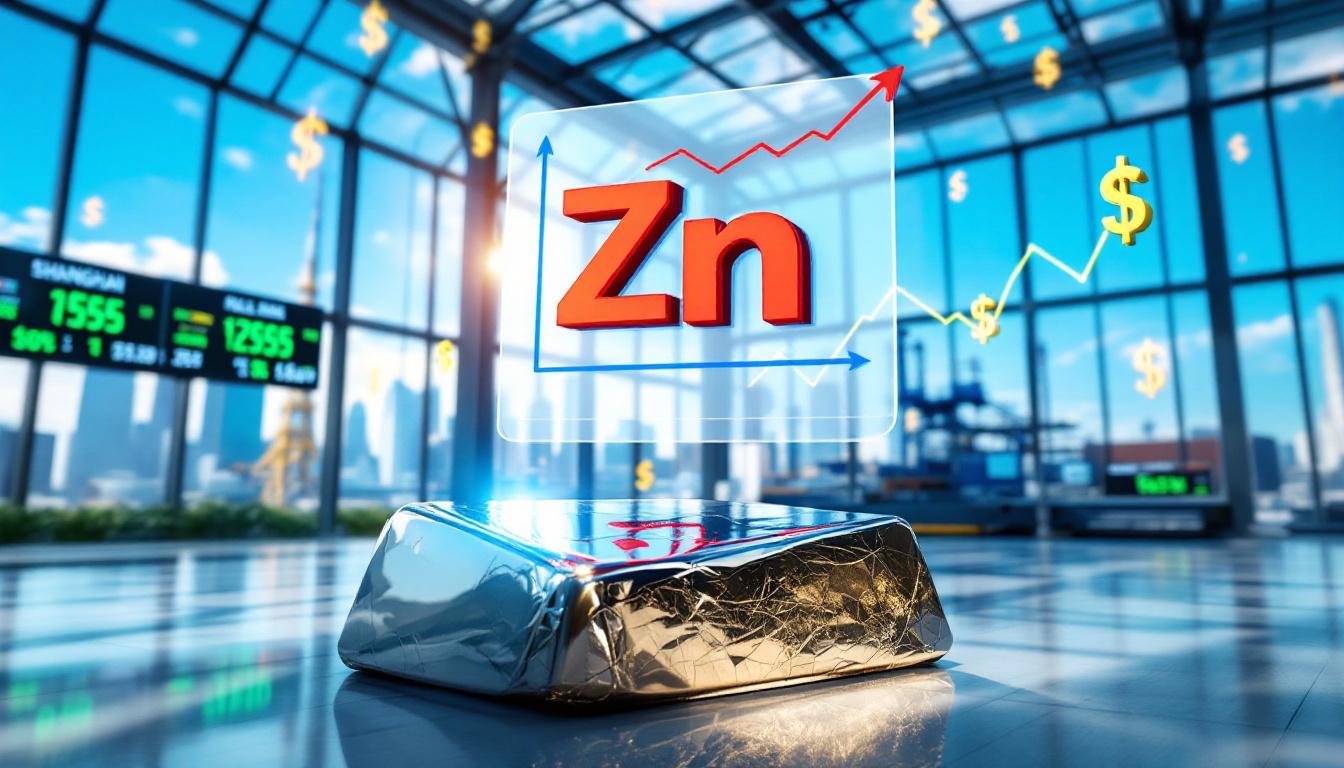## What is the HBIS-Vale Decarbonization Partnership?
Chinese steelmaking giant HBIS Group and Brazilian iron ore mining company Vale have formalised a groundbreaking partnership that highlights HBIS and Vale steel decarbonization. The collaboration supports low‑carbon technologies across the steel value chain. Furthermore, the agreement fosters innovation, as highlighted by decarbonisation in mining, which further enhances industry progress.
This initiative focuses on implementing "optimal burden solutions" to accelerate progress in reducing carbon emissions. Consequently, the partnership underscores the importance of integrated upstream-downstream strategies by consolidating the efforts of a major steel producer and a leading iron ore supplier. Additionally, HBIS and Vale steel decarbonization could serve as a model for similar alliances across the globe.
## Why is Steel Decarbonization Critical for Climate Action?
Steel production accounts for roughly 7% of global carbon dioxide emissions. This staggering figure emerges from heavy coal-dependent processes and is one of the major challenges in mitigating climate change. Consequently, transformative changes are required to reduce emissions while maintaining production efficiency.
The industry often relies on blast furnace methods that necessitate temperatures above 1,500°C. However, technological innovations are now paving the way for alternatives that could dramatically lower CO₂ outputs. In addition, partnerships addressing HBIS and Vale steel decarbonization seek to shift away from conventional practices in favour of sustainable methods.
Global agreements and organisations play a pivotal role too. For example, the international energy agency suggests that meeting climate goals requires a 50% emissions cut in the steel sector by 2050, even as demand increases. Furthermore, climate targets reinforce the urgency in addressing the industry’s carbon footprint.
## What Specific Technologies Will the Partnership Explore?
The collaboration is set to investigate transformative technologies that can revolutionise steel production. Foremost among these is the Tecnored furnace technology. This process offers enhanced treatment of solid waste and efficient metal extraction. In addition, it provides a viable alternative to traditional blast furnace operations, ultimately supporting decarbonisation.
Hydrogen metallurgy is another promising area. This revolutionary method uses hydrogen instead of coal as a reducing agent. Consequently, water vapour replaces CO₂ as a by‐product, especially when renewable electricity powers production. Notably, this change aligns with HBIS and Vale steel decarbonization objectives by contributing significantly to emissions reduction.
CCUS (Carbon Capture, Utilisation and Storage) is being explored extensively. The technology captures emissions before they reach the atmosphere, and industries subsequently store or reprocess the carbon. In addition, this method can integrate seamlessly with innovative production techniques, further enhancing production sustainability.
Furthermore, the partnership will explore circular economy applications. For instance, resource recovery from slag and byproducts helps reduce reliance on virgin materials. Similarly, initiatives like mining’s crucial role in the clean energy transition reinforce the broader objective of reducing waste.
## How Do the Companies' Carbon Neutrality Goals Align?
Both HBIS Group and Vale are committed to achieving carbon neutrality by 2050. This ambition supports a global shift towards sustainable practices. Consequently, their aligned timelines strengthen the HBIS and Vale steel decarbonization plan, ensuring cohesive progress across the value chain.
Vale has pledged to lower its Scope 1 and 2 emissions by 33% by 2030. Nevertheless, further challenges remain with Scope 3 emissions, which account for nearly 98% of its carbon footprint. In addition, HBIS has invested in hydrogen-based steelmaking projects and CCUS technologies at several facilities across China to meet its goals.
By harmonising strategies, the duo intends to address the entire steel production process. In addition, the collaborative approach reduces the risk of shifting emissions between supplier and customer. Moreover, joint development could accelerate innovation by up to 5-10 years compared to isolated efforts, thus reinforcing HBIS and Vale steel decarbonization.
## What Makes This Partnership Significant for the Global Steel Industry?
Industry leaders recognise that decarbonisation is not merely an option but an urgent necessity. As highlighted by HBIS Chairman Liu Jian, the MoU represents a critical step towards comprehensive industry reform. Consequently, HBIS and Vale steel decarbonization is now at the forefront of sustainable production methods.
The partnership unites a top-five steel producer with the world’s largest iron ore supplier. This unique combination empowers the alliance to influence market dynamics. Furthermore, discussions around how china’s economic stimulus boosts australian iron ore mining have provided additional context for integrating sustainable practices.
Moreover, such strategic alignments pave the way for global innovation networks. For instance, similar collaborations among international firms are emerging rapidly. Consequently, the industry is moving towards a future where coordinated efforts set new benchmarks for environmental responsibility.
## What Are the Key Challenges in Steel Decarbonization?
Despite emerging innovations, significant technical, economic, and regulatory challenges persist. Traditional blast furnace technologies have undergone centuries of optimisation. However, new methods such as hydrogen metallurgy remain constrained by the current lack of renewable energy sources, making them less scalable at present.
A major hurdle lies in the availability of renewable electricity. Estimates indicate that switching the steel industry to hydrogen-based processes may require around 500 TWh of additional clean power annually. In addition, the cost premium associated with low-carbon methods can be as high as 10-50%. This "green premium" hinders rapid transformation, despite its long-term benefits for HBIS and Vale steel decarbonization.
Infrastructure is another challenge. New facilities, transport networks for hydrogen, and advanced CCUS systems all require significant upgrades. Additionally, regulatory frameworks differ widely across regions. Thus, the transition is further complicated by the necessity to develop standardised global policies for sustainable production.
## How Will This Partnership Address Circular Economy Principles?
Embracing circular economy principles is central to this collaboration. The goal is to reduce waste while maximising resource efficiency. Consequently, the initiative promotes the reuse, remanufacture, and recycling of materials throughout the steel production process.
Advanced waste management techniques are expected to play a pivotal role. For instance, the Tecnored furnace technology facilitates the recovery of valuable metals from byproducts. In addition, sustainable practices help minimise the disposal of slag, dust, and sludge. Innovations along the lines of rio tinto’s low‑carbon aluminium project in finland further underscore these efforts.
This circular approach is reinforced by improving energy efficiency and reducing raw material consumption. Specifically, new processes can potentially reduce primary resource usage by up to 40%. Moreover, integrating frameworks such as transforming the mining industry through esg challenges and opportunities ensures that the collaborative strategy benefits both the environment and industry competitiveness.
## What Are the Next Steps for HBIS and Vale's Collaboration?
Following the MoU signing, the partners will develop an implementation timeline for their projects. Initial phases involve feasibility studies and technology assessments, scheduled to complete within the next 12-18 months. Pilot projects are expected to launch between 2024 and 2025. This staggered approach minimises risks while ensuring continuous progress.
The roadmap includes several priority areas:
- Optimising burden materials for various low‑carbon production routes
- Advancing energy efficiency across existing operations
- Developing innovative technologies for carbon‑neutral steelmaking
These steps collectively contribute to the broader HBIS and Vale steel decarbonization strategy. In addition, robust measurement frameworks will monitor progress and align with international standards such as the paris agreement.
Stakeholder engagement is also a top priority. The partners will collaborate with industry groups, research institutions, and government agencies. This inclusive approach will stimulate knowledge sharing and support for low‑carbon initiatives across the sector.
## FAQ: Steel Industry Decarbonization
What is the current carbon footprint of steel production?
Traditional steel production emits approximately 1.8–2.4 tons of CO₂ per ton of steel. Consequently, the industry contributes around 7–9% of global greenhouse gas emissions, totalling roughly 3.6 billion tons of CO₂ annually. This substantial impact highlights why HBIS and Vale steel decarbonization is so critical.
How does hydrogen metallurgy differ from traditional steelmaking?
Hydrogen metallurgy replaces carbon with hydrogen as the reducing agent. Consequently, the process emits water vapour instead of CO₂. Moreover, this method drastically reduces direct process emissions, making it vital for achieving meaningful decarbonisation.
What is the Tecnored furnace and how does it contribute to decarbonization?
The Tecnored furnace is an advanced smelting technology that processes diverse iron-bearing materials. In addition, it allows the use of alternative fuels, which results in lower carbon emissions. This technology is integral to lowering overall production emissions.
How do upstream and downstream collaborations reduce emissions?
In integrated approaches, mining companies and steelmakers address emissions collectively rather than in isolation. Consequently, coordinated strategies—such as optimised ore blends and shared carbon capture—enhance overall sustainability. This comprehensive method is pivotal in HBIS and Vale steel decarbonization.
What role do mining companies play in steel decarbonization?
Mining companies are essential as they supply raw materials and can adapt their processes to support low‑carbon methods. Techniques like carbon capture at ore processing facilities further bolster industry efforts. Their collaborative role is key in realising sustainable steel production.
What are the economic implications of low‑carbon steel production?
Low‑carbon methods incur a cost premium, estimated at 10–50% higher than conventional production. However, as technology matures and renewable energy costs drop, this gap is expected to narrow. Furthermore, robust carbon pricing policies and shifting consumer demands support long-term economic viability, making the HBIS and Vale steel decarbonization collaboration even more critical.
In summary, the HBIS-Vale partnership represents a pioneering effort that combines technology, innovation, and strategic collaboration. The union of a leading steelmaker and a major mining company provides a holistic approach to decarbonising steel production. Ultimately, their combined efforts are paving the way for a more sustainable future, demonstrating that integrated solutions can address global challenges while transforming industry practices.
Looking for real-time alerts on the next major mineral discovery?
Discover how you can gain immediate notifications on significant ASX mineral discoveries with Discovery Alert's proprietary Discovery IQ model, transforming complex data into actionable investment insights. Visit our discoveries page to understand how historic discoveries have generated exceptional returns for early investors.




